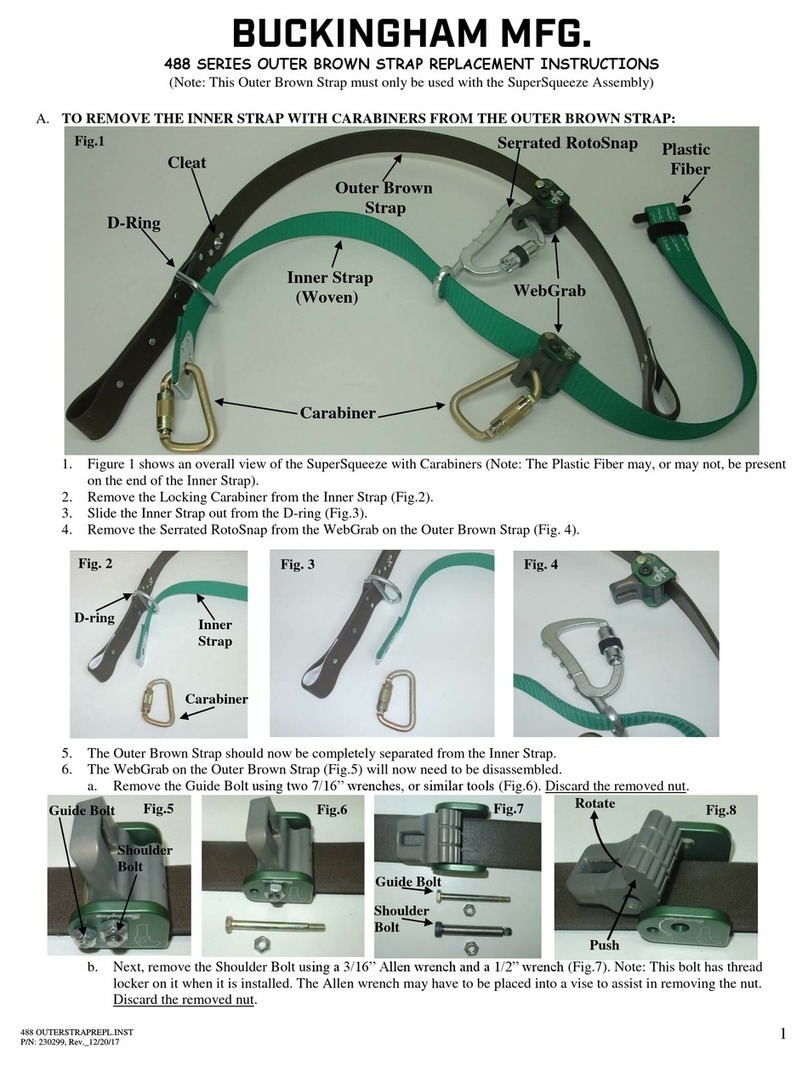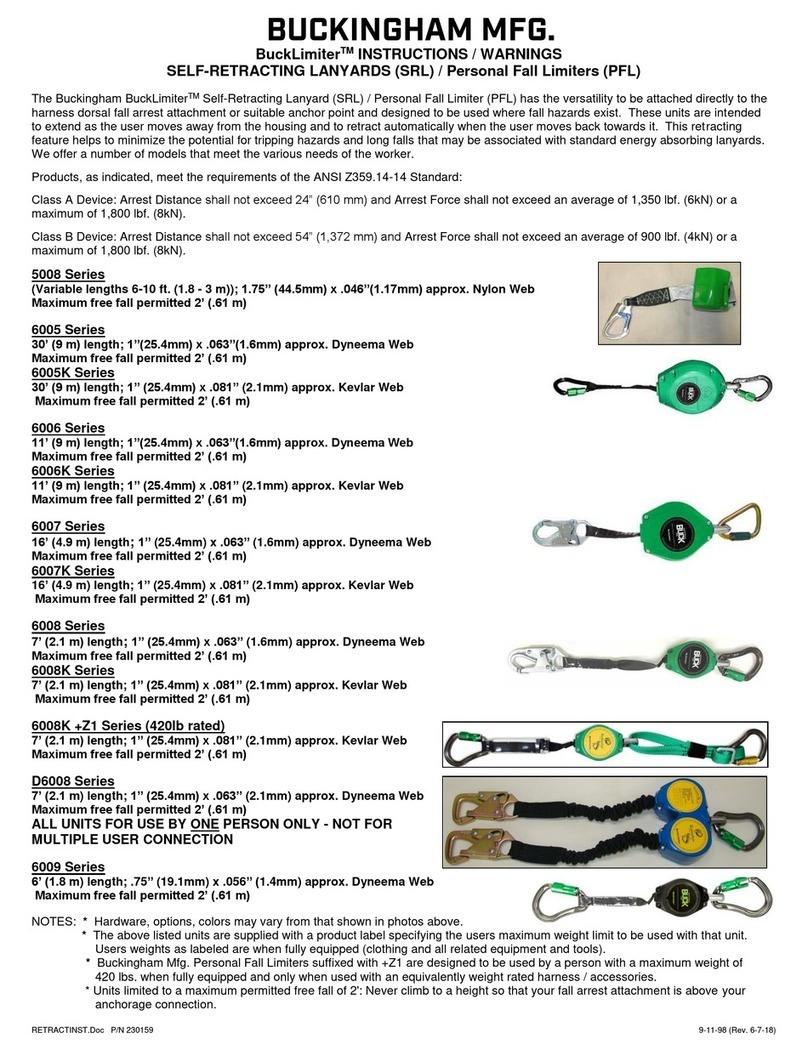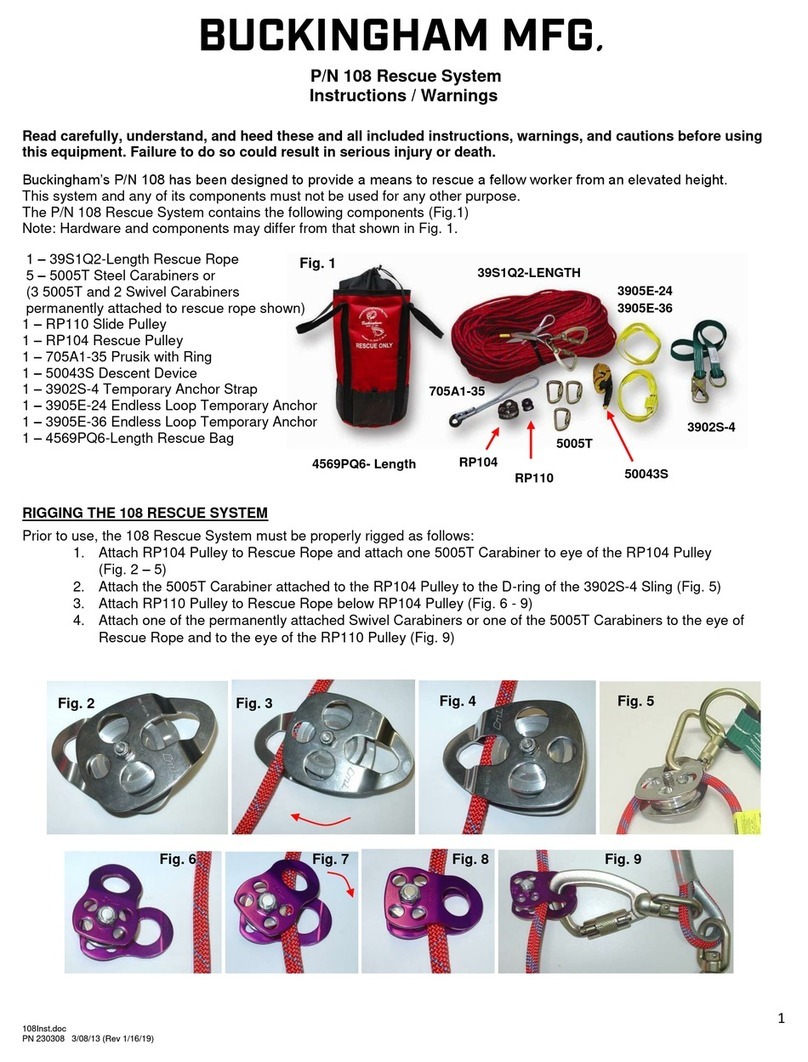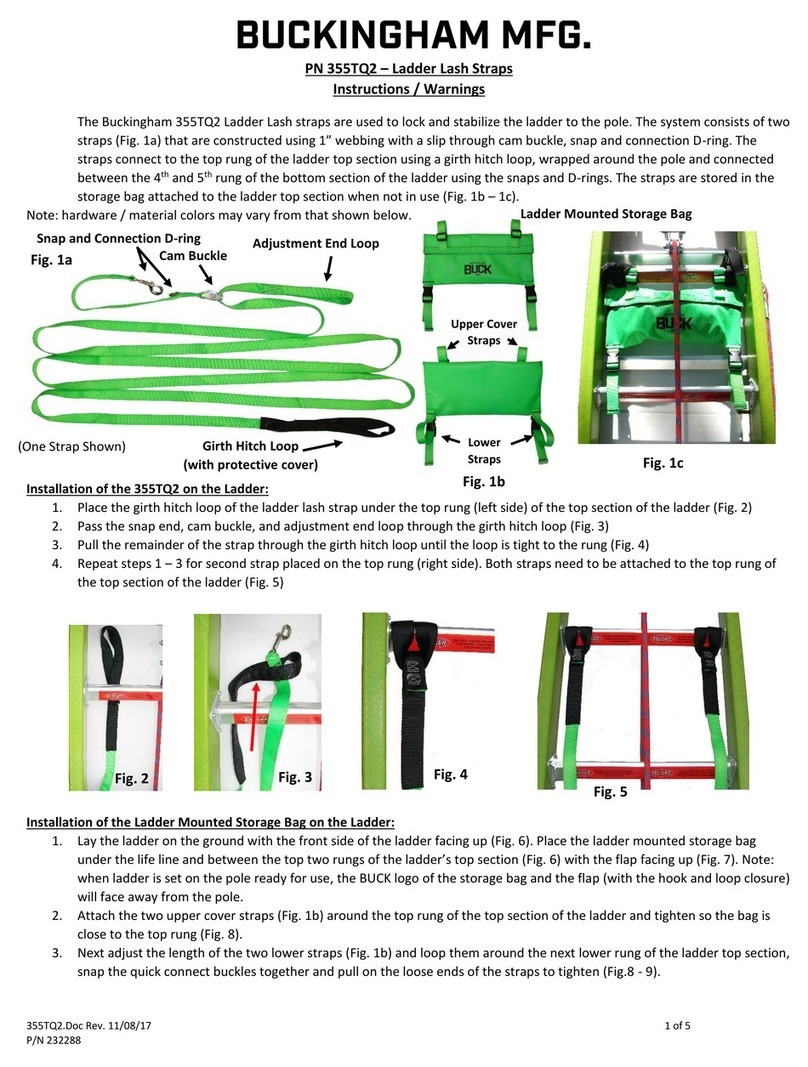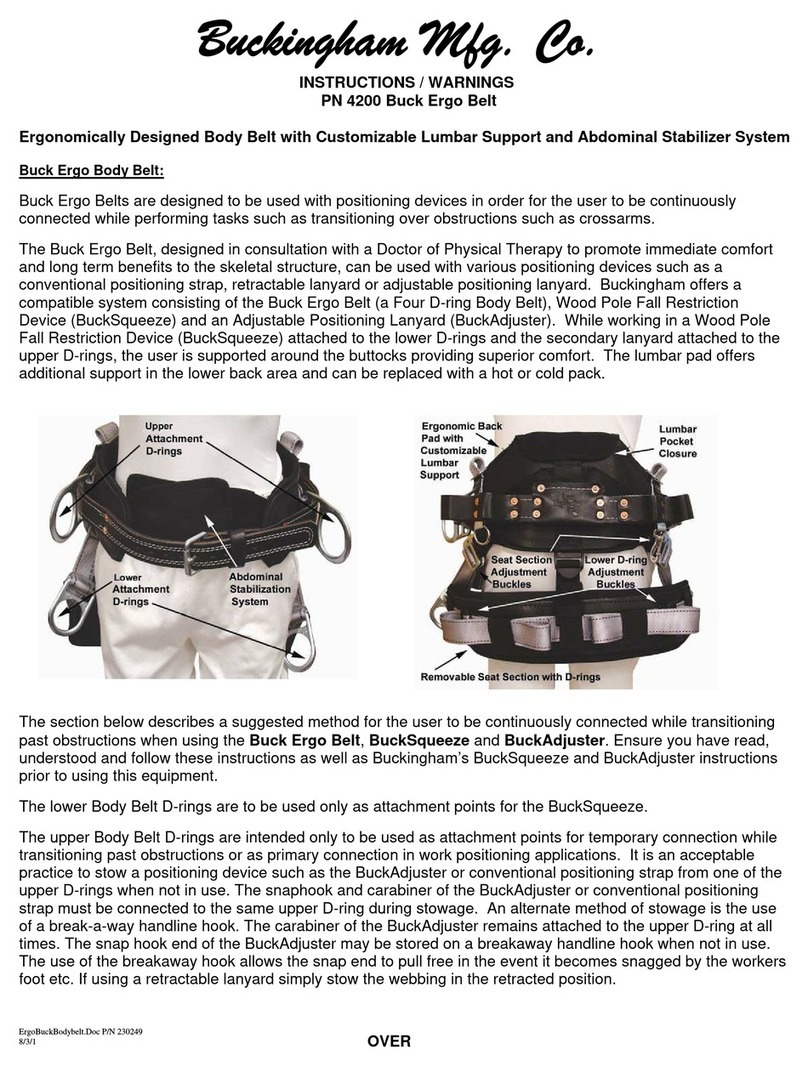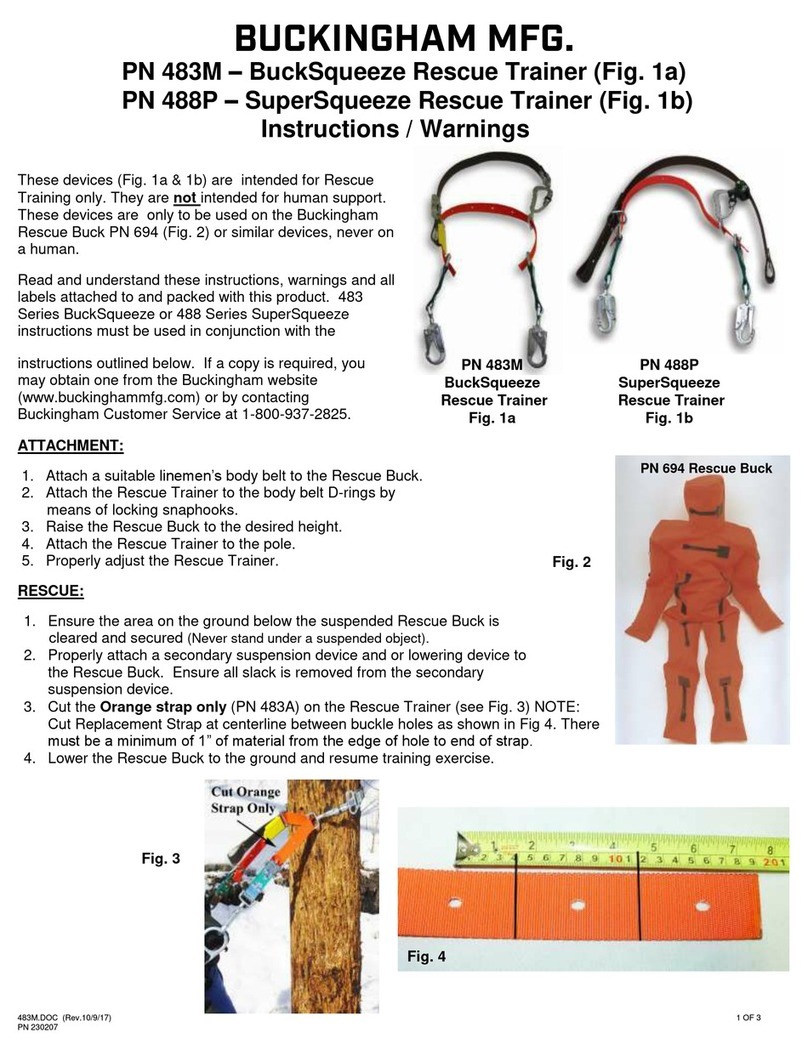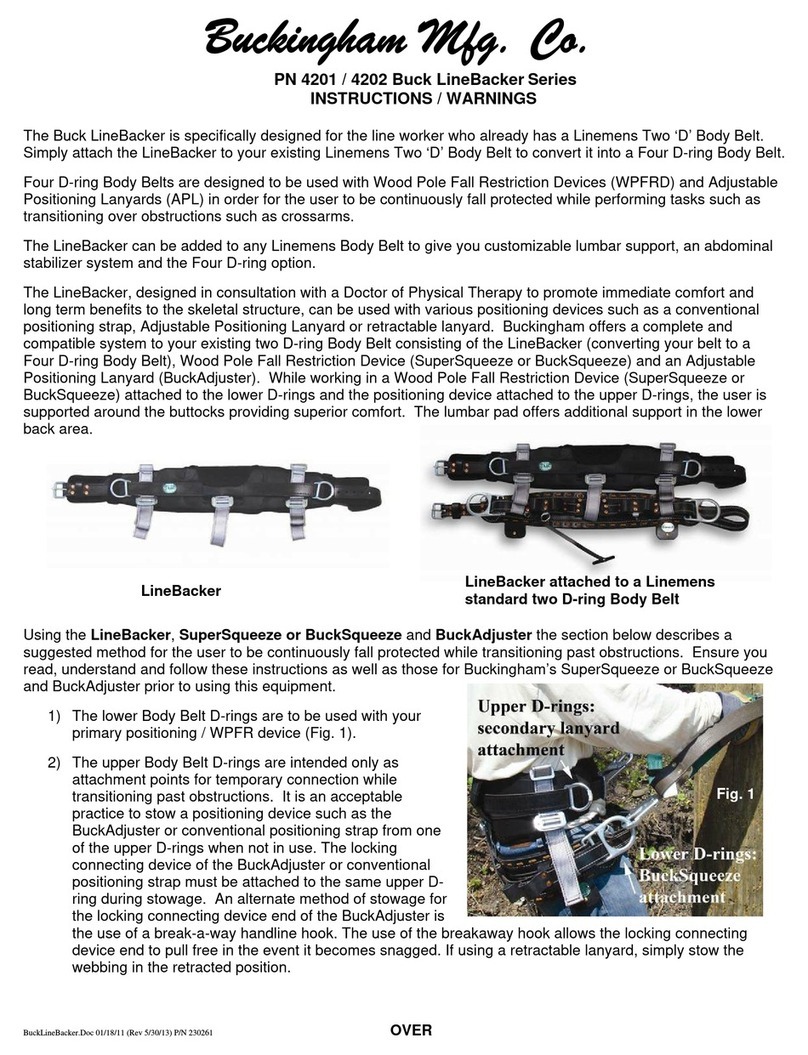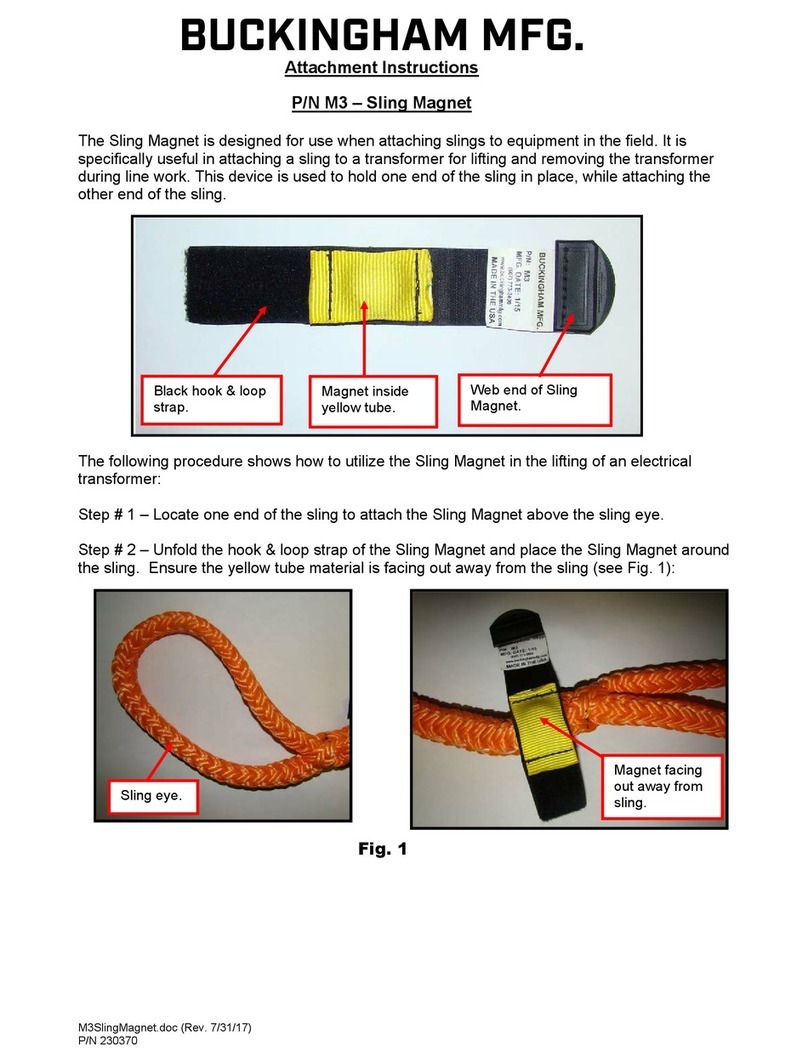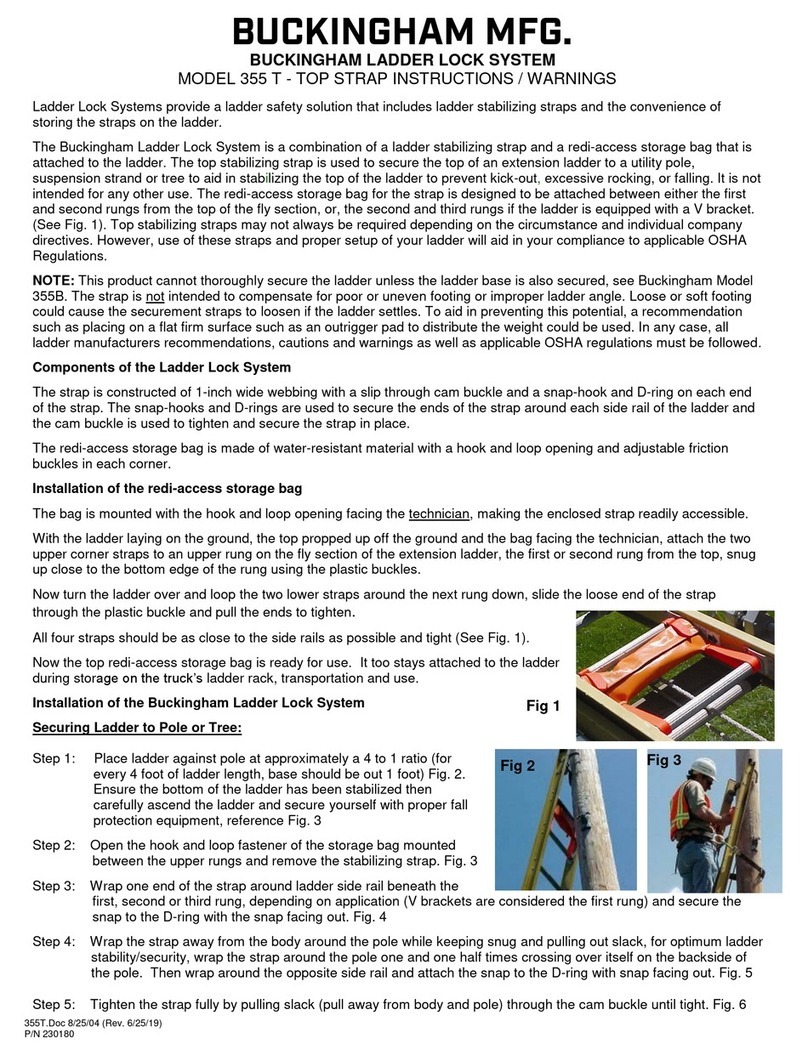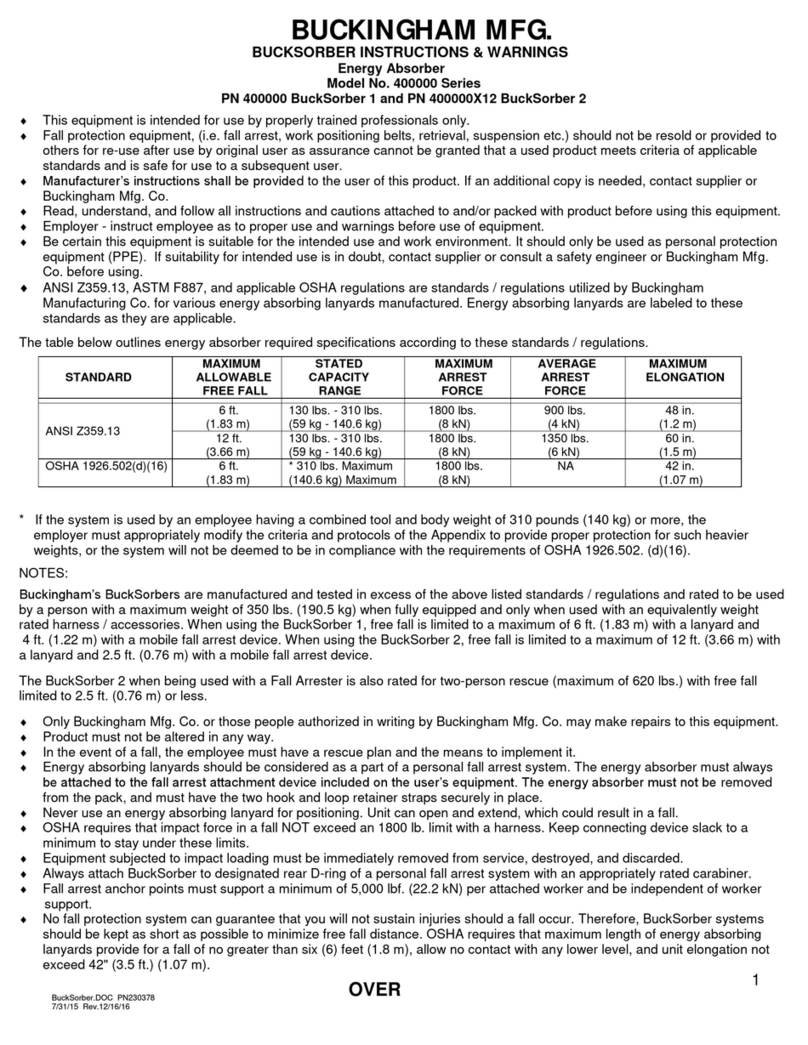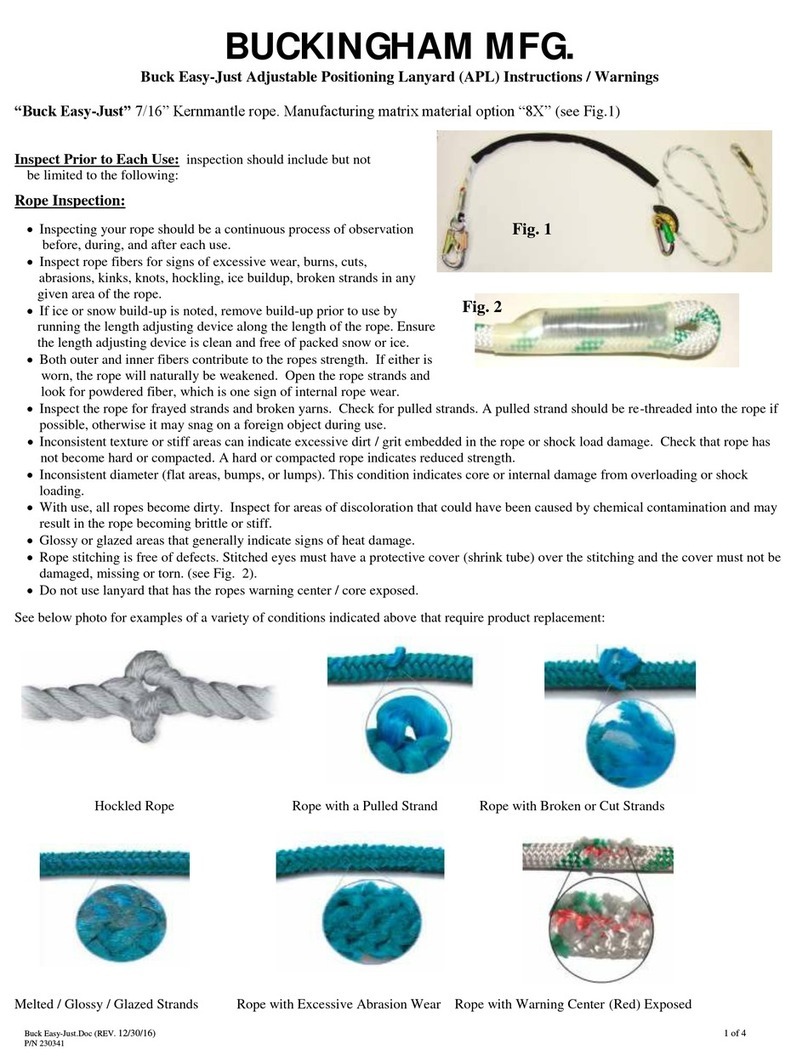
Buck Tech Inst - Warn Doc (02/07/18) Page 7 of 13
P/N 230420
No fall protection system can guarantee that you will not sustain injuries should a fall occur. Therefore, lanyards should be kept as
short as possible to minimize free fall distance. OSHA specifies that maximum length of lanyard shall provide for a fall of no
greater than six (6) feet. In addition, other factors such as harness stretch not to exceed 18", D-ring / connector length, settling of
the user's body, lanyard length, including energy absorber extension and all other contributing elements should be such that the
user can not fall a distance that will allow contact with any lower level. The lanyard attachment point on the user should be in the
middle of the back near shoulder blade level. Do not lengthen a lanyard by tying or knotting to another lanyard or connecting a
snap to a snap. Lanyards should not be shortened by knotting rope or webbing as this can reduce the strength by 50% or more.
NOTE: The hitch detailed above is not considered a knot.
Do not alter your harness or any safety product in any way. If your harness does not fit properly, replace it with one of the correct
size. Wear your harness snug but not tight.
Unless the snap hook is a locking type with minimum gate rating of 3600 lbf., meets ANSI Z359.12 requirements, and designed for
the following connections, snap hooks shall not be engaged:
•directly to webbing, rope or wire rope
•to each other - they are not intended to be used that way and could twist apart
•to a D-ring to which another snap hook or other connector is attached.
•to a horizontal lifeline
•to any object which is incompatibly shaped or dimensioned in relation to the snap
hook such that the connected object could depress the snap hook keeper a
sufficient amount to cause it to release. (See Illustration)
Thorough employee training in the selection and proper use of personal protection equipment is imperative.
CAUTION
•Although ANSI Z359.11 recognizes the use of this harness only within the capacity range of 130 - 310 lbs. Buckingham harnesses, when
marked, can be used by a person with a maximum weight of 350 lbs when fully equipped. Additionally, Buckingham harnesses only can
be used by a person with a maximum weight of 420 lbs. when fully equipped and only when used with an equivalently weight rated
energy absorbing lanyard / accessories. Note: This maximum weight does not apply to body belts attached to a harness.
•Fall protection equipment, (i.e. fall arrest, work positioning belts, retrieval, suspension etc.) should not be resold or provided to others for
re-use after use by original user as assurance cannot be granted that a used product meets criteria of applicable standards and is safe
for use to a subsequent user.
•Only Buckingham Mfg. Co. or those people authorized in writing by Buckingham Mfg. Co. may make repairs to this equipment.
•Equipment subjected to impact loading must be immediately removed from service, destroyed and discarded.
•In the event of a fall, the employer must have a rescue plan and the means to implement it.
•Attach only locking connecting devices meeting standards / regulations for intended use for fall arrest, positioning and suspension to rear
fall arrest D-ring on harness and fall arrest anchor point, saddle / belt D-rings and attachment points.
•Only positioning connecting devices should be attached to side D-rings, as side D-rings are not intended for fall arrest.
•Do not connect any tools, accessory loops / snaps, etc. to the positioning D-rings. D-rings are for attachment of connecting device locking
snap hooks only.
•For units with Work Position Web Loop(s): Buckingham recommends attachment only to carabiner. Buckingham Mfg. does not
recommend attachment of a metal connector, other than a carabiner, to a web loop fall arrest attachment unless the web loop is
protected by an integral wear piece, the connector meets the requirements of ANSI Z359.12 (3600 lbf. rated gate), the snap hook lock
mechanism cannot inadvertently be depressed, and the web loop fall arrest attachment point is inspected prior to each use. Attachment
of a metal connector, such as a locking snap hook, to a web loop fall arrest attachment with no wear piece can cause premature wear of
the webbing and stitching. This degradation can cause the web loop layers to separate and be incapable of supporting your weight.
•If connecting to a personal fall arrest system by attaching directly through the web loop of an energy absorber carefully inspect the inside
of the web loop for cuts, abrasions, broken strands, or excessive wear.
•Buckingham harnesses are manufactured with a breakaway lanyard parking attachment that is generally located in the sternal area of
the harness. This lanyard parking attachment is designed only to store unused lanyard legs to help reduce tripping and entanglement
hazards. Lanyard parking attachments are designed to breakaway at no more than 120 lbf. and are not to be used as load bearing
anchor points.
•Fall arrest anchor points must support a minimum of 5000 lbf. per attached worker and be independent of worker support.
•For fall arrest, always keep anchor point above rear fall arrest attachment. If climbing above anchor point, attach to a new anchor point
higher up. When anchor point to allow for connection above the fall arrest attachment device is not available, lanyard positioning must
be such that free fall will be limited to a maximum of 6 feet and there will be no contact with a lower level.
•Never use an energy absorbing lanyard for positioning. Unit can open and extend which could result in a fall.
•Always attach the energy absorbing lanyard to the rear fall arrest attachment device included on the user’s equipment.
•Always visually check that: 1) each snap hook / carabiner freely engages D-ring or anchor point, 2) keeper / gate is completely closed
with each use. Never rely solely on the feel or sound of a snap hook / carabiner engaging.
•Make sure each snap hook / carabiner is positioned so that its keeper / gate is never load bearing.
•Never use combinations of components or sub systems, or both, which may affect or interfere with the safe function of each other.
•Ensure there is no pressure on the snap hook locking mechanism sufficient to depress it as this will, due to its length, render it
incompatible with currently designed rings and make it very susceptible to rollout.
•Never disable locking keeper / gate on snap hook / carabiner, punch holes in or alter a connecting device in any way.
•Avoid contact of this equipment with sharp edges, abrasive surfaces, high temperature surfaces, welding, or other heat sources,
electrical hazards or moving machinery. When not in use, store to prevent exposure to the elements as well as over exposure to sunlight
(U.V. degradation).
Incompatibly Incompatibly
Dimensioned Shaped
